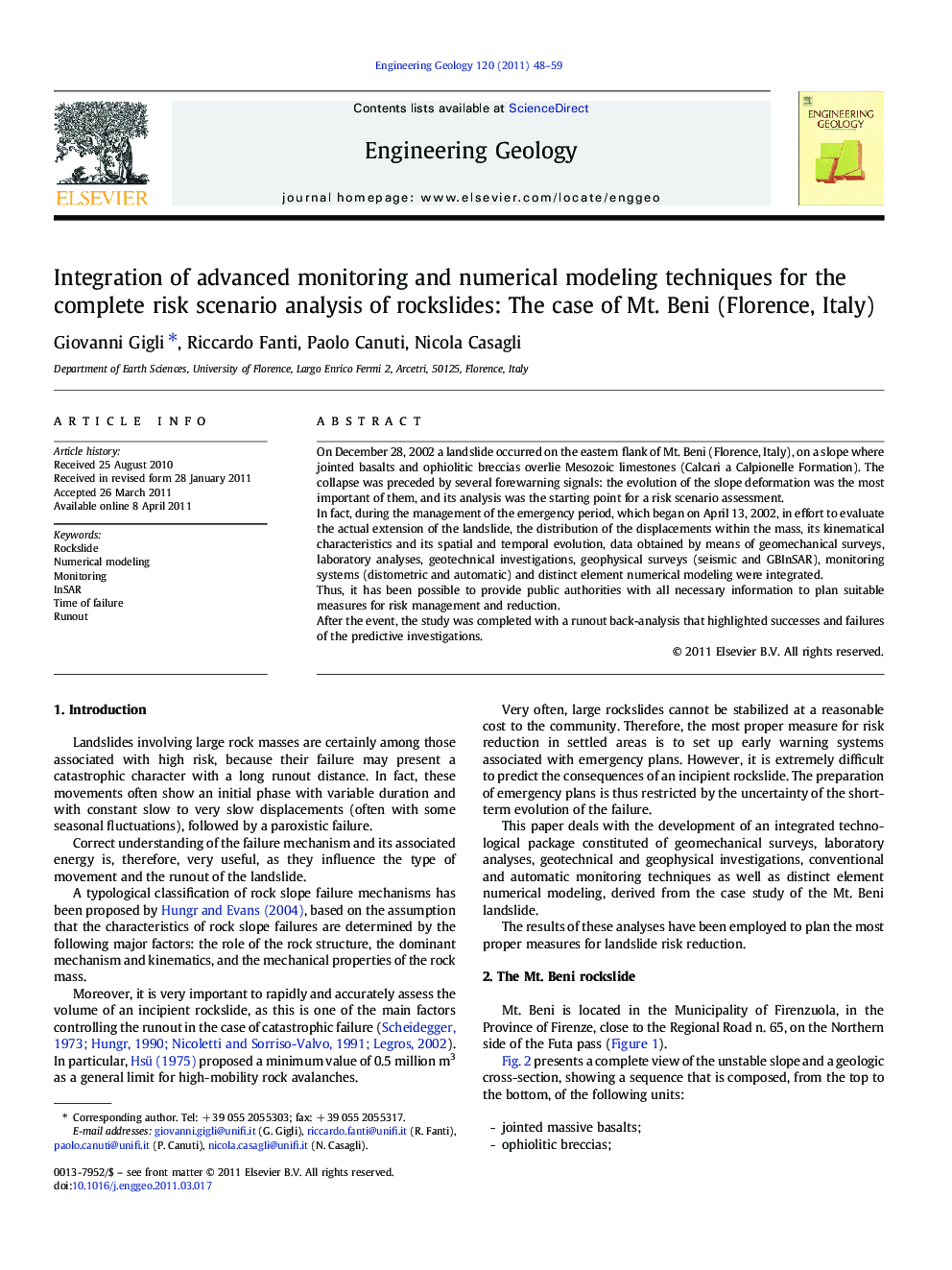| Article ID | Journal | Published Year | Pages | File Type |
|---|---|---|---|---|
| 4744092 | Engineering Geology | 2011 | 12 Pages |
On December 28, 2002 a landslide occurred on the eastern flank of Mt. Beni (Florence, Italy), on a slope where jointed basalts and ophiolitic breccias overlie Mesozoic limestones (Calcari a Calpionelle Formation). The collapse was preceded by several forewarning signals: the evolution of the slope deformation was the most important of them, and its analysis was the starting point for a risk scenario assessment.In fact, during the management of the emergency period, which began on April 13, 2002, in effort to evaluate the actual extension of the landslide, the distribution of the displacements within the mass, its kinematical characteristics and its spatial and temporal evolution, data obtained by means of geomechanical surveys, laboratory analyses, geotechnical investigations, geophysical surveys (seismic and GBInSAR), monitoring systems (distometric and automatic) and distinct element numerical modeling were integrated.Thus, it has been possible to provide public authorities with all necessary information to plan suitable measures for risk management and reduction.After the event, the study was completed with a runout back-analysis that highlighted successes and failures of the predictive investigations.
Research Highlights► Landslides involving large rock masses are associated with high risk. ► Their failure may present a catastrophic character with a long runout distance. ► Large rockslides cannot be stabilized at a reasonable cost to the community. ► It is necessary to set up early warning systems associated with emergency plans. ► An Integrated technological package for landslide risk reduction is presented.
